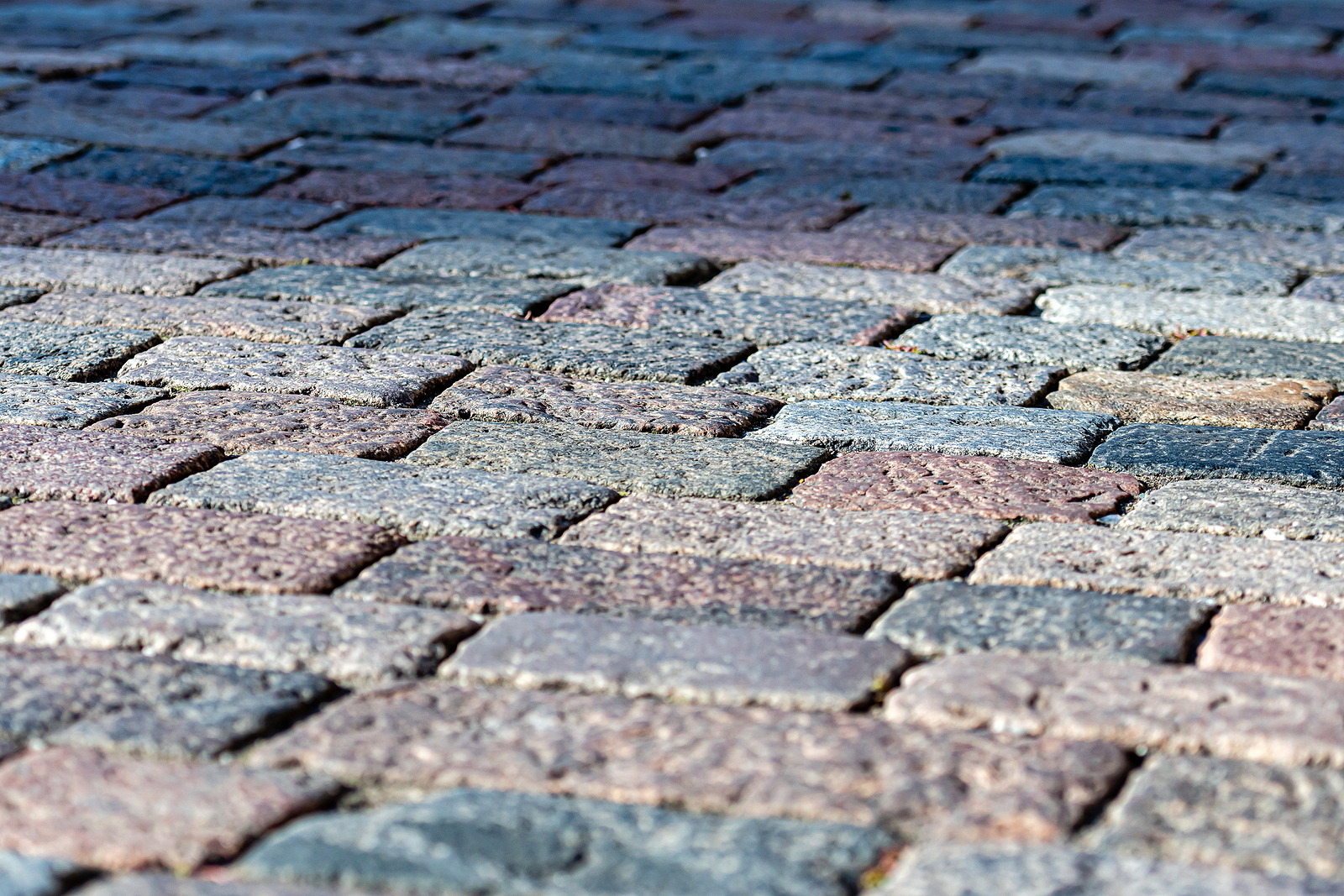Permeable pavements are alternative paving surfaces with a high porosity that allows rainwater to pass through it into the ground below. The permeable pavement structure typically consists of a surface pavement layer (many types), underlying stone and rock aggregate reservoir layer and a filter layer or fabric installed on the bottom.
Conceptually, the rainwater movement relating to permeable pavement mimics natural processes on the ground’s surface, with the goals of maximizing nutrient removal and reducing runoff. Other benefits include water quality protection, reduced flood potential in local streams, reducing pavement surface temperatures, recharging groundwater, safer driving surfaces in some circumstances and eliminating the need for retention basins and water collection areas.
Maintenance
A common maintenance concern with permeable pavement applications is surface clogging caused by organic matter and sediment. Proper design and periodic vacuum sweeping are among important maintenance considerations. Sand should not be used on permeable pavement surfaces in order to avoid plugging the drain accesses. Soils surrounding these permeable pavement systems should be stabilized with permanent cover so that sediment does not plug the pavement surface.
The cities of Clinton and Charles City, Iowa have provided information about their experiences with permeable pavement, including maintenance:
City of Clinton: Permeable Pavements
(Information below written by the city of Clinton)
During the past four years, the city of Clinton has completed the construction of 10 city blocks of permeable pavement installation. These projects cover a wide variety of permeable pavement and each type of installation comes with its own maintenance requirements. The city of Clinton has installed brick paver parking bays, permeable alleys, porous asphalt and entire widths of roads consisting of permeable pavers. This work has been constructed in both high traffic business areas as well as low traffic residential areas with equal success.
In 2014, as a part of a sewer separation project the City installed four ‘Green Alleys’ which are alleys entirely made up of permeable pavers, 13 brick parking bays, and replaced two-and-a-half blocks of downtown sidewalk with brick pavers. All said, this totaled to more than 27,000 square feet of new brick pavers installed. Since completion we have cleaned the pavers each year. This requires sweeping and washing the pavers followed by vacuuming up the washed chips that fill the void between the pavers. Once the voids are cleaned between the pavers, the chips are replaced. This is approximately a one-week process. Between the high traffic and the regular cleaning, these pavers have been kept in good working condition. A few isolated areas require a bit of ‘elbow grease.’ These areas are located adjacent to gravel parking areas and grass lawns. The gravel lots have been replaced with clean stone, but over time it breaks down and can be an issue. The clippings from the lawns can find their way into the voids, but with the regular cleaning it is easily dealt with.
More recently the city completed installation of nine blocks of permeable pavement the width of the road. This was also in conjunction with a sewer separation project. Instead of using smaller brick pavers that required chips to be placed in the voids, we used a product called Pave Drain. The larger voids between pavers allow enough water to drain through without allowing sediment to build up. Because there is no medium between the pavers where sediment can collect, this installation needs to be observed regularly but does not require the invasive cleaning like the smaller brick pavers provided no build up is occurring. We will need to also regularly check the sub-drains to ensure they remain clear and convey drainage.
While these projects do bring with them additional maintenance requirements such as yearly cleanings, replacing the chips, inspecting the sub-drains and their potential cleanings, these are maintenance items that can be planned for and scheduled. While one project was a high-traffic commercial area and the other was a low-traffic residential area, both were constructed in relatively flat areas in a low lying portion of town. Following any rain event both locations were inundated with puddles, and the old combined sewer system was overwhelmed. Any excess water that made it into the sewer typically led to basement backups for the business and home owners in the area. These type of issues are difficult to manage and plan and often required frantic mobilization to overcome. Trading our past issues for the new, regularly-scheduled maintenance of these areas is a no brainer. By reducing flooding and basement backups combining permeable pavements with the sewer projects have created a much more stable environment in these locations and made everybody from the city, business owners and residents grateful.
City of Charles City: Permeable Pavements
(Information below written by the city of Charles City)
Charles City has been maintaining 26 blocks of permeable paved street since 2010, and now 29 blocks since 2016 with the addition of new permeable paving. It was recommended that the city use a rubber cutting blade on our street equipment plows so as not to damage the pavers in the snow removal process. We did that initially, but now our regular practice is to use a normal blade as the snow plow drivers became accustomed to snow removal in these areas. Over the eight winters since we initially installed pavers we’ve had no instances of “catching” any pavers with a plow blade, and the maintenance on the permeable paved streets has been minimal. Over that time, we’ve had one instance of pavers buckling at an intersection that we had to repair. We also make some changes on right-of-way water collection from the area between sidewalk and street. However, all-in-all it has been a successful project. We also had a couple cases of needed repairs to water and/or sewer service lines underneath the permeable paved area where we were able to remove bricks, repair issue, and replace brick and not be left with an ugly patch job on a new street.
We sometimes salt these areas to assist with snow/ice removal, but we cannot use sand as you need to maintain the spacing between the pavers for drainage. This typically is not an issue as the permeable paved streets are some of the areas that snow melts and drains from first. When the sun melts the snow and ice it has the ability to drain away immediately rather than pool and re-freeze which leaves a good driving surface.
We’ve had a really good experience with permeable paving in Charles City. We plan on doing some additional permeable paving in the future as projects and financing allows. There is an added cost to installing permeable pavers, but you can sometimes justify the additional cost based on other savings. For instance, in one of our next planned areas, by using permeable paving we will not need to upgrade the storm sewer as more water will be retained on-site and released slowly over time. This also is a big benefit from a storm water handling perspective, an issue that we along with many other communities are dealing with more and more.






